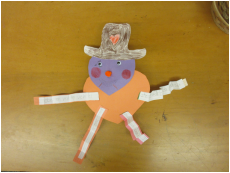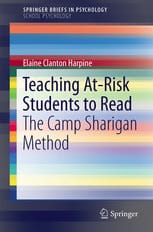An important study by Yoncheva, Wise, and McCandliss, published in the journal Brain and Language (2015), shows why phonemic awareness works with at-risk students, students who are failing. The National Reading Panel, which studied over 100,000 reading programs and published a nationwide report in 2000 that states that whole language and other methods following whole language principles simply do not work. Neuroimaging research clearly shows that at-risk students, who have previously failed in reading, can be taught to read (Keller & Just, 2009). The neuroimaging study by Keller and Just (2009) actually showed at-risk children improving in reading when phonemic and phonological awareness techniques were used. It’s not the students. It’s not even the teachers. The problem and the reason that we are failing to teach children to read is the teaching method that we are using to teach reading (Foorman et al., 2003; Lyon, 2002; Rayner et al., 2001). It’s time for a change. We need to help children, not hurt them. As you make New Year resolutions, think of the children.
|
We need to make a New Year’s resolution to start using an effective, research-proven approach to teach children to read. Whole language (all forms including “blended” methods), “look say”, guessing from context clues, memorizing sight word lists, and even the Reading Recovery approach have all been proven to not work. We ask students to try their best and do their best in school. It is time for educators, school administrators, curriculum publishers, and even university education departments to change and start using a system that works. The Nation’s Report Card (NPC) (2015) stated that only 36% of 4th graders and only 34% of 8th graders across the nation can read proficiently at grade level. That means that over 60% of 4th graders cannot read at grade level. They are failing. Yet, we have the methods and ability to teach these failing students to read. Yes, students who are presently failing can be taught to read. We have research proof.
An important study by Yoncheva, Wise, and McCandliss, published in the journal Brain and Language (2015), shows why phonemic awareness works with at-risk students, students who are failing. The National Reading Panel, which studied over 100,000 reading programs and published a nationwide report in 2000 that states that whole language and other methods following whole language principles simply do not work. Neuroimaging research clearly shows that at-risk students, who have previously failed in reading, can be taught to read (Keller & Just, 2009). The neuroimaging study by Keller and Just (2009) actually showed at-risk children improving in reading when phonemic and phonological awareness techniques were used. It’s not the students. It’s not even the teachers. The problem and the reason that we are failing to teach children to read is the teaching method that we are using to teach reading (Foorman et al., 2003; Lyon, 2002; Rayner et al., 2001). It’s time for a change. We need to help children, not hurt them. As you make New Year resolutions, think of the children.
0 Comments
Reading failure is a life-long problem, especially when you consider that 85% of juvenile offenders in the court system are classified as “functionally illiterate” because they cannot read (National Center for Adult Literacy 2007). Reading failure is also considered one of the main causes of overall academic failure.
As a nation, we have a long history of reading failure under whole language instruction. Over the past 25 years, nationwide testing has shown that over half the children and teens across the nation cannot read at grade level by 4th or 8th grade. The Nation’s Report Card (NPC) (2015) stated that only 36% of 4th graders and ONLY 34% of 8th graders across the nation can read proficiently at grade level. When we tie reading failure to retention and to dropping out of school before graduation, we truly have a serious problem (Fleming et al. 2004). Reading failure can lead to enormous life-long complications (Coll and Marks 2012; Vaughn et al. 2010; Vaughn et al. 2014), especially when you consider that 70% of American prison inmates cannot read above the 4th grade level (National Center for Education Statistics (NCES) 2007). I discuss the reading problems that we face in more detail in my newest book: Teaching at-Risk Students to Read: The Camp Sharigan Method.  One mistake some people make in teaching letter sounds is to teach children by the first letter in a word, saying these words are similar: bell, bike, ball, book. Unfortunately, although each of these words starts with the same consonant sound—the letter B, the brain does not organize words by beginning letter sounds. When you introduce new words that contain several vowel sounds as in the example above, it is very confusing to children who are struggling to read. The brain identifies words by (and we learn to pronounce words by) the vowel sound in the word. Therefore, we need to teach children to read by using words that have common vowel sounds: at, back, cat, fat, hat, mat…. If we teach using the organizational structure that the brain uses, it makes it easier for at-risk students to learn. I call it vowel clustering. The children in my reading clinic learn to decode and encode words by vowel sounds. For example, the letter A has 7 sounds and 22 different ways to make those sounds. Here is the Mr. A puppet that children make and cover with words that they have captured. We always start with the letter A. Then, we study I and U, before tackling the more difficult vowel sounds for O and E. It’s not important to go in order: A, E, I, O, and U. It actually helps children to mix easier vowel sounds in between the harder sounds. |
Elaine Clanton Harpine, Ph.D.Elaine is a program designer with many years of experience helping at-risk children learn to read. She earned a Ph.D. in Educational Psychology (Counseling) from the Univ. of Illinois at Urbana-Champaign. Categories |

 RSS Feed
RSS Feed
